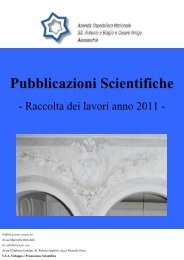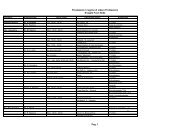Working Paper of Public Health Volume 2012 - Azienda Ospedaliera ...
Working Paper of Public Health Volume 2012 - Azienda Ospedaliera ...
Working Paper of Public Health Volume 2012 - Azienda Ospedaliera ...
Create successful ePaper yourself
Turn your PDF publications into a flip-book with our unique Google optimized e-Paper software.
<strong>Azienda</strong> <strong>Ospedaliera</strong> Nazionale“SS. Antonio e Biagio e Cesare Arrigo”<strong>Working</strong> <strong>Paper</strong> <strong>of</strong> <strong>Public</strong> <strong>Health</strong>nr. 16/<strong>2012</strong>Results: the empirical analysis suggests that an excessive allocation <strong>of</strong> employees at thehighest level <strong>of</strong> the hierarchical pyramid can affect the hospitals’ performance.Conclusions: a redistribution <strong>of</strong> employees among hierarchical levels is necessary to increasethe hospital’s efficiency.1. Introduction and theoretical backgroundConsidering the Italian healthcare system, the present study analyzes the aspects that mightaffect the efficiency <strong>of</strong> Italian hospitals. Even if this paper presents an application to theItalian case, the methodology to compute efficiency is well known in environmental field butits application in healthcare industry is very recent – as shown afterwards – and the resultscould be useful in terms <strong>of</strong> healthcare management. Indeed, in this work the authors analyzewhat might affect a specific definition <strong>of</strong> efficiency, which is calculated maximizing thehealthcare production but minimizing the potential financial loss. In other words, this workconsiders efficient each hospital which is able to maximize the production <strong>of</strong> medicaltreatments while complying at the same time, with budget constraints. Considering thecurrent era <strong>of</strong> austerity and the redefinition <strong>of</strong> the European welfare systems, as well therelated national spending review, this work is even more interesting and necessary. Indeed,even if this work is focusing on Italy, the policy implications could be extended to otherEuropean countries, which are facing the same spending reviews and the redefinition <strong>of</strong> theirnational welfare systems.In the last decades the frontier methodology has been widely adopted to compute theefficiency <strong>of</strong> healthcare management (Gattoufi et al., 2004). In particular, many authors havefocused on distinguishing between non-parametric and parametric measures in order to definethe best methodology to apply to the healthcare field (Hollingsworth et al., 1999;Hollingsworth, 2003). Parametric techniques, such as the regression model, assume a specificfunctional form in defining the frontier and they are susceptible to model misspecification,whereas non-parametric approaches are not (Rosko, 1999). Moreover, another significantpoint about frontier methodology, i.e., Data Envelopment Analysis (DEA) or StochasticFrontier Analysis (SFA), concerns the distinction between deterministic and stochasticapproaches. The former do not contain a random error component and then they can besensitive to outliers; the latter can separate inefficiency from random effect (Banker, 1993).Nevertheless, the problem linked to the impact <strong>of</strong> extreme observations on the frontier can be2



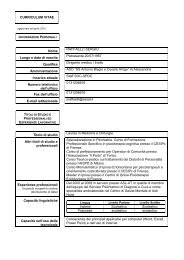
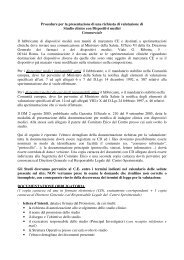

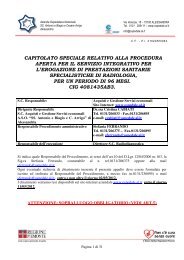
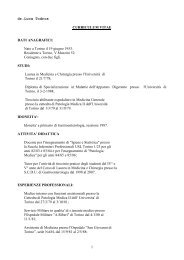
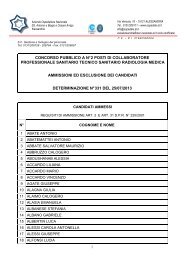

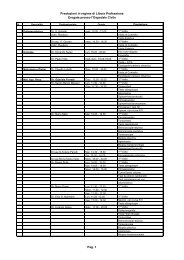


![[torino - 1] lastampa/urc/01 ... 26/10/09 - Azienda ...](https://img.yumpu.com/44058002/1/190x32/torino-1-lastampa-urc-01-26-10-09-azienda-.jpg?quality=85)

